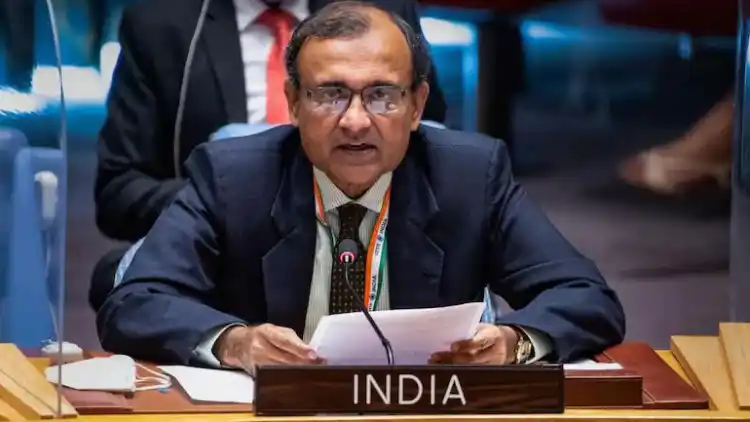
Neelam Gupta/ New Delhi
When India became the President of the United Nations Security Council for August 2021 after taking over as a non-permanent member of the body for two years, Ambassador T S Tirumurti had to throw a customary banquet for the members of the august body that includes five veto power and 14 other countries.
Much thought went into planning the menu, for the international events are an opportunity to showcase a country’s soft power and, if possible, push larger national political and economic goals.
Ambassador’s wife Gauri worked with the staff of the Indian Mission in New York for months together to finalise the food to be served. Finally when the table was laid, the food comprised millets, the new superfood for the world, and the commonly grown crops in India.
Delicious dishes were prepared using Ragi, (Finger millet), Maize (coast grain), Kangani (foxtail millet), Varai, or Vrat wale chawal (Barnyard millet). The guests relished the food and carried home gift hampers containing India-grown millets.
This Millet as an indigenous Indian crop being introduced to the global powers at a social event was in line with India’s efforts to boost the production of these crops at home and raise the demand for its products globally.
It’s on India’s suggestion that the UN has declared 2023 as the year of the Millet Also In September, the FAO is organizing a Global Food Systems summit that will have one session devoted to millets. All these events will bolster the global demand for foods that Indians have loved to ignore in the past two decades, and could now become a major source of income for farmers.
Millets have been rediscovered by the world for their high nutritional value and environmentally friendly crop. The rice and wheat have become the staple of Indians in most regions after the green revolution and the setting up of the PDS (Public distribution system) or the ration shops selling subsidized grains.
These come with a cost for health and the environment. While paddy cultivation is a great source of methane, the most lethal gas causing global warming, it’s also a water guzzler. The wheat with its gluten is the cause of many health ailments and is particularly detrimental to those suffering from diabetes. Besides, the cost of these crops is phenomenal in comparison with the humble millets.
Millets like Bajra, Jowar, Ragi, Kangni, Jhingori, Kodo, and Kutki are grown easily without much tending in any soil. These crops need no fertilizers as well.
More importantly, the millets grow without much hard work and tending and unlike rice are not water guzzlers
While the world leaders are eating it, at home, Indians have given up on their easily growing food to more environmentally hazardous rice and wheat. As per estimates, the production of millets has come down by 60% even as India retains the position as the top millet producing country in the world
In India currently, millets are grown on around 14 million hectares of land and the total production is 14 million tonnes a year. These nutri-foods are mostly grown in Rajasthan, Maharashtra, and Karnataka.
According to Food and Agricultural Organisation (FAO),” the Global millet production was estimated at 28.4 metric tons in 2019. India is the largest producer with a 41% share in global production. In the last two decades, the importance of millets as food staples, particularly in India, has been declining due to various factors, including rising incomes, growing urbanization, and government policies.” Also, the Indian farmers were not into exporting the millets.
Sensing the global trend of the millets being rediscovered by the world as superfoods, the Narendra Modi government set up the Indian Institute of Millet Research (IIMR) at Hyderabad to push and guide farmers for the cultivation of these crops. For this major step, the government simply converted the Directorate of Sorghum research into IIMR.
However, there is much disconnect between the government’s focus and the farmers who would ultimately shape India’s ambitions to dominate the world millet market. When this scribe visited the south Gujarat area where farmers cultivate only millets, locals were not aware of the government's plans to accelerate the millet production. Nobody had spoken to them nor did anyone offer them either improved seeds or inform them about the possibility of exports of what they grow.
Sanyasi Rao, programme manager at Wassan, a Telangana-based organization that works on rainfed agriculture, pointed out that the supply chain of other millets seeds is inefficient, and there is a need to work on ensuring their availability.
